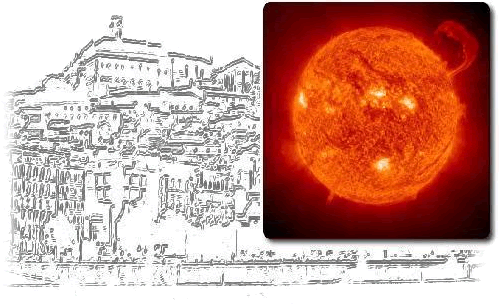|
|
|
|
|
|
|
|
|
|
|
|
|
Masaoki Hagino, Mr. - PhD |
|
National Astronomical Observatory of Japan, Tokyo, Japan |
|
|
|
|
|
|
|
Session 1 - Poster |
|
Development of the Universal Tunable Filter and High-resolution Imaging Observation with the Fuxian Solar Observatory |
|
M. Hagino (1), K. Ichimoto (2), S. Ueno (2), G. Kimura (2), R. Kitai (3), L. Zhong (4), Z. Xu (4), K. Otsuji (1), K. Shinoda (1), H. Hara (1), Y. Suematsu (1), and T. Shimizu (5);
1 - NAOJ, Tokyo, Japan, 2 - Kyoto University, Japan, 3 - Bukkyo University, Kyoto, Japan, 4 - National Astronomical Observatory of China, Beijing, China, 5 - Japan Aerospace Exploration Agency |
|
|
|
We have developed a new narrowband universal tunable filter to perform
imaging spectroscopy of the solar chromosphere for future application to space (ex.
Solar-C) and ground-based observations. Using Liquid Crystal Variable Retarders
(LCVRs) as the elements for tuning the wavelength, it is possible to make high speed
tuning (about 0.1sec) without mechanical drives (and oil tank), and using wide-band
polarizers and super achromatic half-wave plates, the filter can be usable over the
wide range of wavelength (510-1100nm). This filter builds up with seven stages each
consisting of a pair of calcites, LCVR, half-wave plates and
linear polarizer. The full width at half maximum (FWHM) of the filter
transmission is about 0.025nm at 656.3nm. The developing phase of the filter has
almost finished and we shift to scientific observation phase by using large
ground-based telescopes.
Using the filter, high-resolution images were taken with the 1m vacuum solar
telescope at the Fuxian Solar Observatory, Yunnan Observatory of China during 19-30
January 2015. Several flares and fine structures of the chromospheric layer were
observed during the term. In this paper, the observation will be reported in
detail. Especially, we will discuss about motions in a filament related M-class
flare on 30 January 2015. |
|
|
|
|
|
|
|




 









 |



